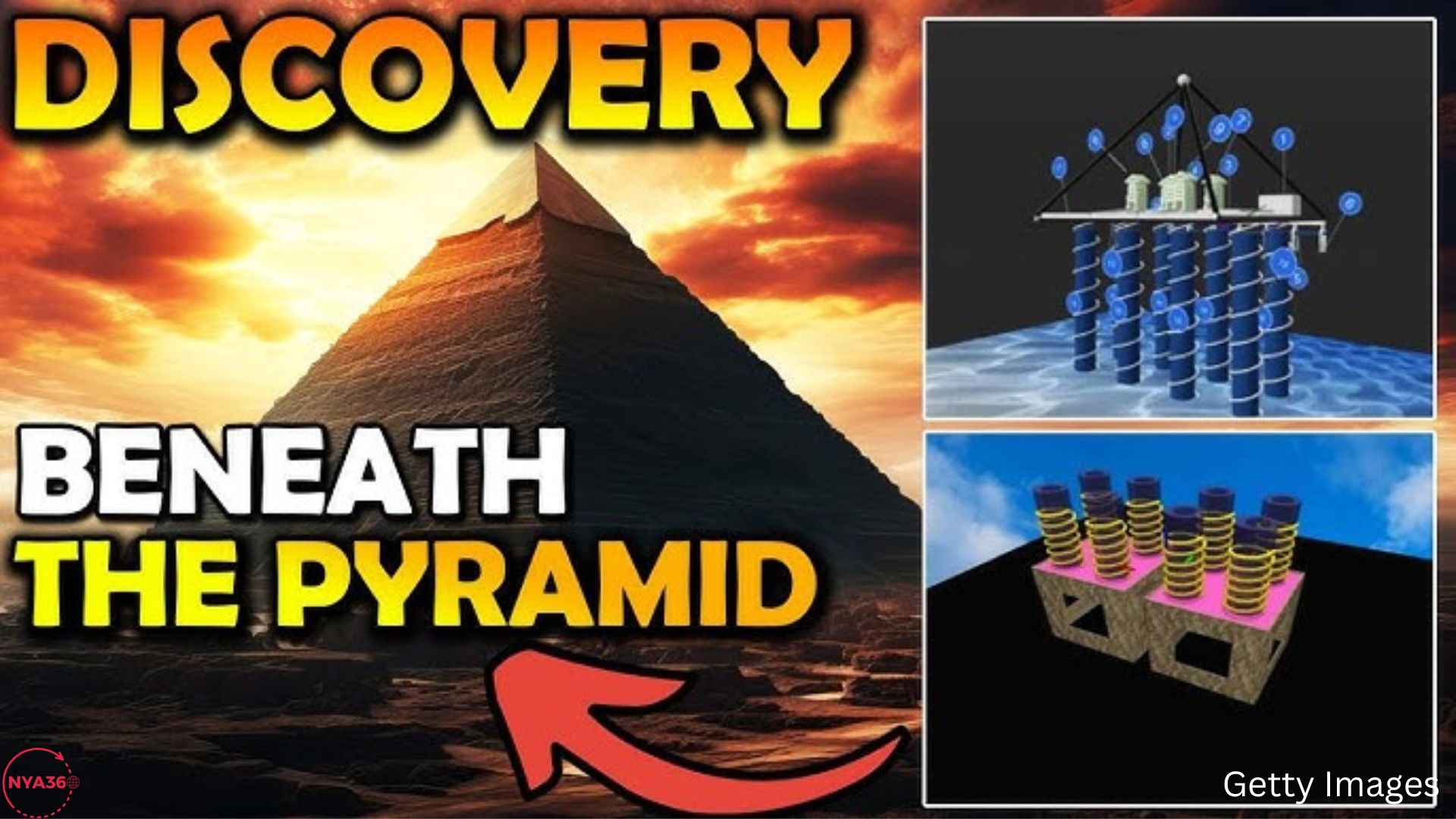With their majesty, secrecy, and mysterious function, the ancient pyramids of Giza have enchanted the globe for ages. Innumerable ideas, investigations, and conjectures have revolved around the pyramids because they stand as a monument to the craftsmanship and foresight of ancient Egyptian civilization. On the other hand, the archeological community is abuzz with both enthusiasm and skepticism at recent reports of the uncovering of a massive subterranean metropolis beneath these famous ruins.
New evidence points to the presence of a vast underground complex under the Great Pyramids of Giza, according to a team of researchers headed by Filippo Biondi of the University of Strathclyde and Corrado Malanga of the University of Pisa. The Khafre Project has been the subject of much speculation and debate, with many people questioning the veracity of the researchers’ claims about the size and complexity of the underworld beneath the pyramids.
Claims of a Massive Subterranean Metropolis
The researchers attribute the discovery to the utilization of Synthetic Aperture Radar (SAR), a state-of-the-art technology that permits the mapping of structures deep beneath the surface of the Earth without causing any disturbance to the ground. Some of the mysterious buildings, according to Biondi and Malanga’s claims, reach more than 2,100 feet below the pyramids, and their radar scans have shown their existence. Some ancient Egyptians had the belief that the underground chambers known as the “Halls of Amenti” held spiritual importance, and these buildings offer a description of that location.

The excavation crew found several subterranean chambers and eight objects with a vertical, cylindrical shape. Supposedly, some of these rooms go down as far as four thousand feet, which is much deeper than anything found under the pyramids before. The researchers have not yet presented any photographic proof to back up their assertions, but they imply that the subterranean metropolis might contain vital information regarding the ancient Egyptian culture.
One of ancient Egypt’s most illustrious pharaohs, Khafre, is believed to have constructed the second pyramid at Giza, and the find has been named after him. Biondi claims that the team’s utilization of radar technology is a significant step forward in the pyramids’ exploration, providing a glimpse into a previously unknown and mostly unspoiled realm that has been preserved for countless generations. Reportedly, five small, room-like structures were found within the pyramid itself through radar scanning, casting doubt on long-held beliefs on the pyramid’s interior layout and purpose.
Importance of the “Halls of Amenti”
Egyptian mythology gives special weight to the idea of the Halls of Amenti. Some think that gods like Osiris can help the souls of the dead navigate these hallowed hallways to the afterlife. The corridors, according to some readings of Egyptian scriptures, are a huge subterranean network that may stand for some cosmic passage between the realms of life and death. Our current knowledge of Egyptian beliefs and behaviors regarding the afterlife could be drastically altered if their revelation is shown to be true.
The fact that these chambers may have connections to the pyramid complex raises the possibility that the ancient Egyptians built an underground metropolis for religious or ceremonial events. According to this theory, the pyramids were meant to symbolize the connection between the living and the gods, rather than just serve as tombs.

Criticism and Doubt
Some members of the archeological community remain skeptical about the results, even though Biondi and Malanga made some strong assertions. Distinguished ancient Egyptian scholar and former Egyptian Minister of Antiquities Zahi Hawass has called the allegations “absolutely wrong” and “fake news.” According to Hawass, who has studied the pyramids and their environs extensively, no scientific evidence exists to prove that such enormous subterranean buildings existed.
According to Hawass, no large-scale underground constructions beneath the pyramids have been detected despite decades of inquiry using a variety of techniques such as gravimetry, muon tomography, and radar. Specifically, he has deemed scientifically unfounded the claim that radar was utilized to survey the interior of the pyramid. The solid stone of the pyramids prevents radar technology from penetrating them to the extent that the researchers claim, particularly at such great depths, according to Hawass.
Another radar expert who expressed doubt in the report was Professor Lawrence Conyers, who is considered a leading authority in subsurface radar technology. According to Conyers, the Khafre Project’s technology can’t capture detailed photos at the depths that the researchers have proposed. The study’s radar devices, says Conyers, aren’t built to go that far below, so they couldn’t possibly gather useful information about structures hundreds of feet below ground. The results, he said, were “a huge exaggeration,” and the researchers should be ashamed for making such bold assertions without proof.
These criticisms have cast serious doubt on the reliability of the results from the Khafre Project. Experts are urging prudence in interpreting these assertions due to the lack of direct photographic proof and independent verification, even though Biondi and Malanga maintain their results.

Why Third-Party Evaluations Are Essential
There is a rising agreement among scientists and archaeologists that the Khafre Project ought to be reviewed independently before drawing any conclusions, considering the debate surrounding it. The conclusions have been called into question due to the lack of transparency in this case, which undermines the foundation of scientific inquiry, peer review.
It is difficult to determine the validity of the assertions made by Biondi and Malanga without conducting a more thorough analysis, and the enigma surrounding the underground metropolis beneath the pyramids remains far from solved. Nevertheless, there’s no denying the irresistible charm of discovering what lies beneath the Giza Plateau. The prospect of fresh discoveries never fails to captivate the public and academics alike.
The Enigma Underneath Giza
The story emphasizes the enduring fascination with the pyramids of Giza and the secrets they hold, regardless of whether the claims made by the Khafre Project are shown to be accurate or not. Speculation on the afterlife, the beginnings of civilization, and the ancient Egyptians’ technological abilities has been fueled by these ancient structures for ages. Underneath the pyramids, people will keep digging for answers as long as there is disagreement among scientists over the veracity of recent assertions.
Even though we don’t know what’s beneath the Giza Plateau just yet, what we do know is that it is one of the most famous and everlasting symbols of human history, and the discoveries that have come to light so far have certainly challenged our assumptions about it. Perhaps the secret world under the pyramids will ultimately unveil its mysteries as exploration methods and technology improve, but for now, the mystery remains.
Follow us on Instagram, Threads & Twitter X @nya360_ YouTube & Facebook @nya360.





